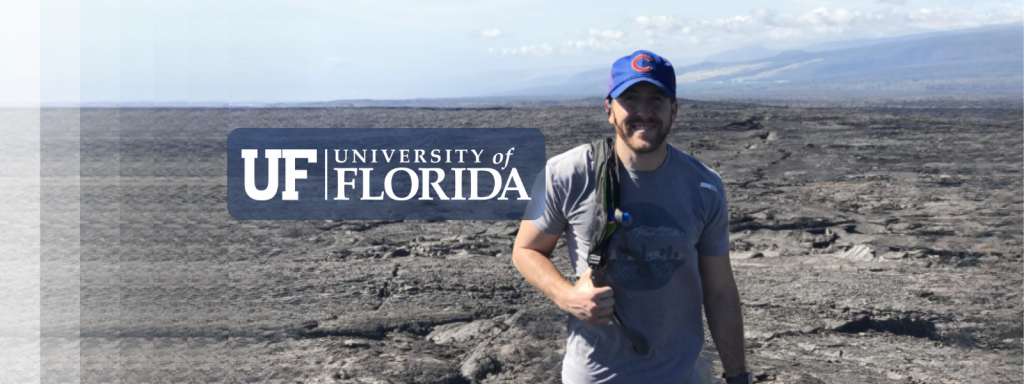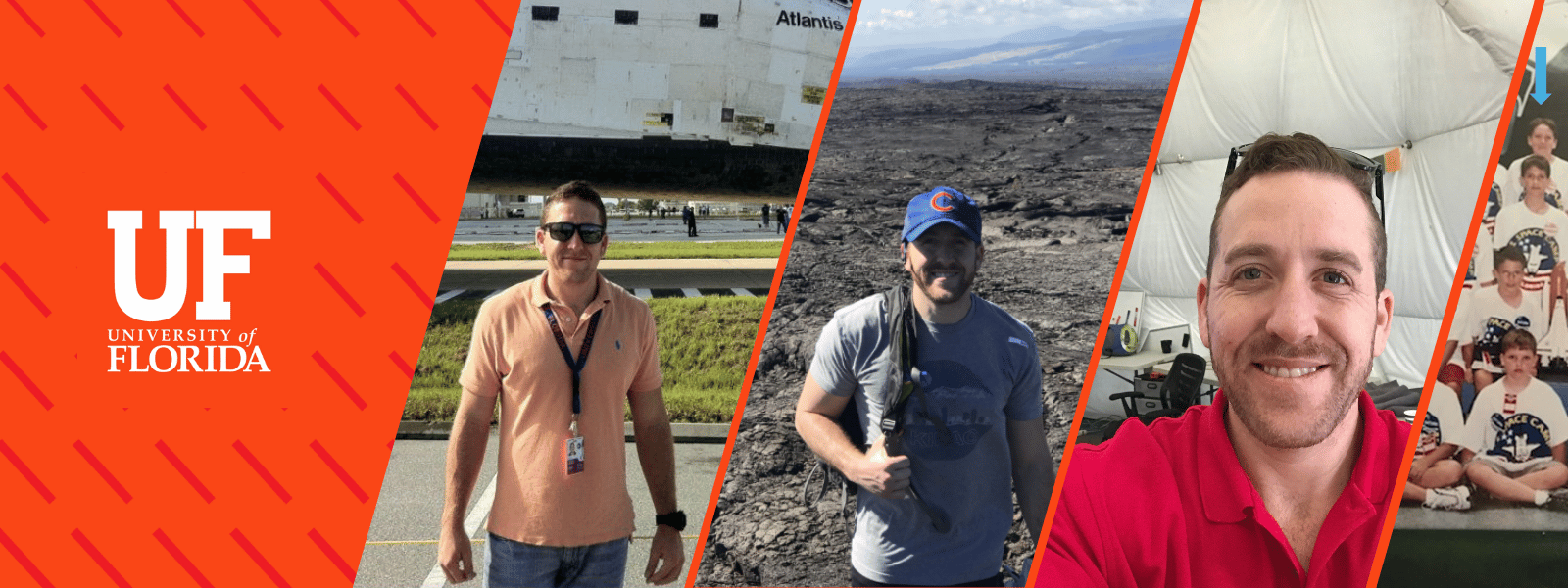For Josh Ehrlich, a University of Florida Mechanical and Aerospace Engineering alumnus, a passion for space has fueled a career with some of the most prestigious names in aerospace, including NASA, SpaceX, Lockheed Martin, and Blue Origin. His journey, from designing space systems to an eight-month Mars analog mission, proves that success isn’t about flawless grades or an easy trajectory. Instead, it’s built on resilience, adaptability, and an unwavering drive to push the boundaries of exploration.
While at UF, Ehrlich found himself immersed in a world of new opportunities, balancing academics, extracurriculars, and campus life. With so many avenues to explore, his attention was often pulled in multiple directions, leading to academic challenges that tested his confidence. Some courses pushed him to his limits, and at times, he questioned whether he could succeed. Ultimately, he refused to let his grades at the time dictate his future or stand in the way of the dream he held since his days as a young boy in space camp.
Leaning on the unwavering support of his family, as well as his peers in marching band and ROTC, Ehrlich found the encouragement he needed. “You were made for this, and it’s going to happen for you,” they reminded him. Determined to push forward, he transformed campus coffee shops into study halls, refining his focus and study habits. Engineering clubs offered hands-on experiences that brought classroom concepts to life, while research projects and internships provided real-world applications of engineering principles—helping him build both skills and confidence.
Ehrlich’s dedication led to major internships that propelled his career forward. In 2007, he spent spring break at NASA for a week-long internship, and by 2008, he had secured a position with United Launch Alliance (ULA), working directly on a launch pad and supporting ordinance, safety, and design for the Delta IV Heavy rocket. The following year, he expanded his industry experience with another ULA internship, this time in Denver. These early opportunities reinforced his belief that challenges were simply stepping stones to greater achievements.
“I would rather fail in order to learn who I really am and what I’m really capable of. Finding yourself in that hole and building your own ladder to climb out is what makes the success even sweeter in the end.”
His early career at NASA involved designing and testing plant growth experiments, which continue to operate aboard the International Space Station. His passion for science took root long before then, inspired by childhood gardening experiences with his grandmother. Merging his love for plants with engineering, he found a niche that set him apart.
Perhaps one of his most defining experiences was his time at HI-SEAS, an analog Mars mission conducted on Hawaii’s Mauna Loa volcano. Living isolated in a 1,200-square-foot habitat for eight months with a small crew, he studied how people adapt to extreme environments. As part of the experiment, he helped test strategies for sustaining life in deep space, including growing fresh produce in a setting designed to mimic the conditions of Mars. The mission reinforced the importance of teamwork, adaptability, and the psychological challenges of space travel. It also deepened his appreciation for Earth’s simple pleasures—fresh air, sunlight, and even the taste of a ripe tomato.
At SpaceX, Ehrlich played a role in the development of the Falcon 9 launch vehicle, a game-changing rocket that redefined the economics of spaceflight with its reusable design. His journey then took him to Lockheed Martin, where he contributed to the Orion spacecraft’s European Service Module, a critical component designed to support NASA’s deep-space missions. Working on these high-stakes projects often required close collaboration with international partners, from engineers in Europe to mission planners across the globe. Through these experiences, Ehrlich gained firsthand insight into the diverse perspectives that shape the future of space exploration. He saw how different nations bring unique expertise, resources, and philosophies to the table, reinforcing his belief that humanity’s pursuit of space is not the effort of a single country but a global endeavor that thrives on cooperation across cultures, disciplines, and borders.
Now, as part of Blue Origin, Ehrlich is helping pave the way for the future of space exploration. His work focuses on developing the company’s Cargo Lander, including systems for offloading large assets onto the Moon’s surface—an essential step toward establishing a sustained human presence beyond Earth. He is also involved in supporting the delivery of habitats and rovers to the Moon, contributing to the design of supporting long-duration robotic and crewed missions across the lunar surface. Beyond the technical aspects, Ehrlich is driven by Blue Origin’s broader vision of making space more accessible, pushing the boundaries of what’s possible for future generations of engineers and explorers.
“Blue Origin’s mission really resonated with me. The idea of building a future where millions of people can live and work in space is something that I’ve always been passionate about. The projects I’m working on now—developing systems for lunar landings and sustainable space habitats—are pushing the boundaries of what’s possible, and that’s exactly where I want to be.”
Ehrlich’s advice to future engineers is simple but profound: don’t let struggles define your potential.
“It’s not about having the best grades at all times or a perfect path,” he says. “It’s about not giving up, despite hurdles. If you’re passionate and persistent, you can do great things.”
As a proud Gator engineer, he carries the spirit of innovation and curiosity that UF MAE instills in its students. His journey, from campus to contributing to groundbreaking space missions, demonstrates the limitless possibilities that come with dedication, creativity, and a drive to push boundaries.

Story & Editing & Design by: Christi Swiers
Marketing & Communications Specialist
UF Mechanical & Aerospace Engineering
March 5, 2025

